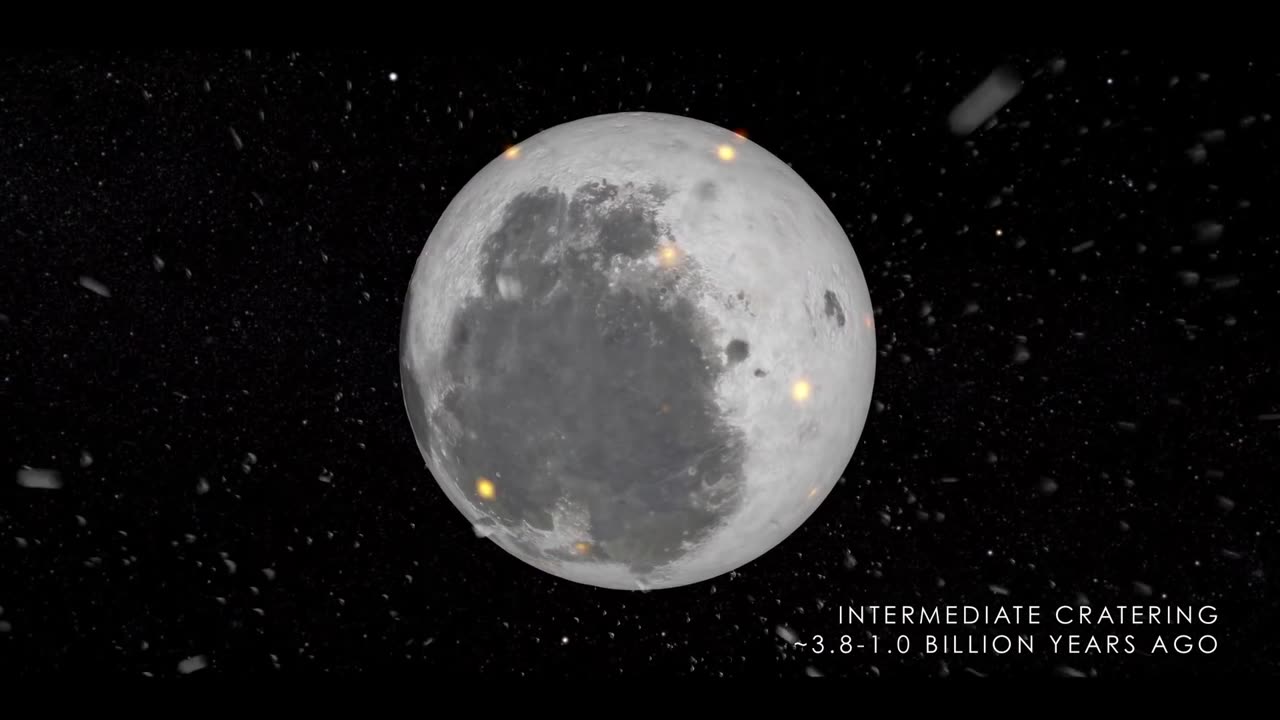Premium Only Content

NASA | EVOLUTION OF THE MOON
The Moon's evolution involves several key stages. It likely formed about 4.5 billion years ago from debris generated by a collision between Earth and a Mars-sized body. Initially, the Moon was much closer to Earth and had a molten surface. Over time, its interior cooled, forming a solid crust.Volcanic activity was prevalent during its early history, creating the vast plains known as lunar maria. The Moon also experienced a period of heavy bombardment by asteroids and comets, creating impact craters seen today.About 3 billion years ago, volcanic activity subsided, leading to the Moon's relatively quiet phase. The surface continued to be shaped by occasional impacts, along with factors like solar wind and micrometeoroid impacts.Fast forward to the present, the Moon is geologically inactive, with no active volcanism or tectonic activity. Its surface is characterized by maria, impact craters, mountains, and valleys. The Moon's rotation has also gradually slowed due to tidal forces from Earth, resulting in synchronous rotation where the same side always faces our planet.In recent years, there's been interest in returning to the Moon, with plans for lunar exploration and potential human habitation.
-
 LIVE
LIVE
vivafrei
1 hour agoShameless Politicization of Tragedy! Susan Monarez is OUT! Pritzker is an IDIOT! & MORE!
11,576 watching -
 LIVE
LIVE
The Quartering
1 hour agoCount Dankula Live On Migrant Crisis In Europe, Whiteness & More
21,306 watching -
 LIVE
LIVE
Barry Cunningham
5 hours agoBREAKING NEWS: KAROLINE LEAVITT HOLDS WHITE HOUSE PRESS CONFERENCE (AND MORE NEWS)
3,010 watching -
 LIVE
LIVE
Major League Fishing
6 days agoLIVE! - Fishing Clash Team Series: Challenge Cup - Day 5
430 watching -
 2:53:12
2:53:12
Right Side Broadcasting Network
6 hours agoLIVE REPLAY: White House Press Secretary Karoline Leavitt Holds a Press Briefing - 8/28/25
84.4K35 -
 1:38:09
1:38:09
Simply Bitcoin
3 hours ago $0.97 earnedIs This Your LAST Chance to Buy Bitcoin Before the GENERATIONAL Bull Run Begins? | EP 1320
6.46K -
 LIVE
LIVE
StoneMountain64
1 hour ago#1 WARZONE TACTICIAN + New Battlefield Trailer
137 watching -
 20:03
20:03
Adam Does Movies
2 hours agoAlien: Earth Episode 1 - Recrap
47 -
 15:38
15:38
IsaacButterfield
10 hours ago $0.12 earnedExploiting His Baby For Views (The Island Boys)
9386 -

The Boomer Effect
6 hours agoBuy American and Build America
3